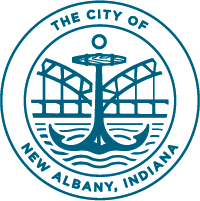A Message from Mayor Gahan Regarding the Future of Public Housing
/As the New Albany Housing Authority Board (NAHA) continues to consider a partnership with the City of New Albany, I thought it would be helpful to share my perspective on the plan and our intentions.
The majority of New Albany’s public housing was built at a time when the needs of low income people were not given much consideration. Public housing was built in isolation, with little or no access to services and public transportation. Riverside Terrace, for example, was built in an industrial area next to a tannery. Now, after decades of inadequate federal funding, we have hundreds of units that are in terrible disrepair in locations that are not convenient to jobs, services or shopping.
Currently, the New Albany Housing Authority is facing a $138 million deferred maintenance shortfall since 2010, similar to housing authorities across the nation. According to the US Department of Housing and Urban Development (HUD), there is a $26 billion backlog of public housing capital improvements nationally. Additionally, President Trump’s proposed budget seeks to further reduce HUD funding, putting an even further strain on resources to improve the conditions of public housing.
On Monday, the NAHA will consider a Memorandum of Understanding (MOU) between the City and NAHA. This MOU establishes a multi-year plan through which the City and NAHA will work together to revitalize public housing in New Albany. The plan establishes a partnership between the City and NAHA to improve our community for all people.
This plan is not radical, mean-spirited or punitive. No public housing resident will be left homeless. The units that are slated for demolition are in such poor condition that it is not practical or responsible to repair them. Contrary to media accounts, we intend to rebuild a portion of the unfit units that will be demolished. While there will be fewer traditional public housing units once the plan is complete, NAHA will provide support to the same number of people as it does now, but the mix of subsidies and NAHA-owned units will change. This plan does not mean the City or NAHA is turning its back on our commitment to public housing.
Our plan reflects current thinking in subsidized housing policy. We will be using a mix of housing vouchers and newly constructed units, located in mixed-income developments to help meet the needs of some of our most needy citizens. We are adopting a national, modern model of public housing that has been embraced by the US Department of Housing and Urban Development, and implemented by Louisville, Cincinnati and many other cities. Instead of requiring our citizens live in neglected public housing, we will build new units that will not stigmatize those receiving assistance and we will provide more opportunities for residents to access housing in the private market. Additionally, any new private housing development that received local government support will be required to reserve a percentage of the units for low-income residents. New Albany is a generous, welcoming community and this plan reflects that spirit.
We are working with many government officials and organizations which understand our need to change. The New Albany City Council and our planning and zoning departments have incorporated the basic tenets of the MOU into our city-wide comprehensive plan. This plan acts as a guide for growth in and around the city for the next 20 years.
I have met and discussed the challenges facing public housing with officials from HUD, the New Albany Redevelopment Commission, the Salvation Army, Southern Indiana Housing Initiative (SIHI), Hope Services, and others. Each of these organizations understand the unique circumstances we have in New Albany and the need to move forward with a new approach to improving the quality of life for all residents in New Albany. Additionally, I have met with the newly elected Governor and will meet with other state officials as we finalize our plan.
During my five years as Mayor, I have been focused on making New Albany one of the best places for families to live in the region. We’ve invested in infrastructure, the downtown, the riverfront, parks and schools. Our plan for public housing is intended to build on this past work and move our community forward.




